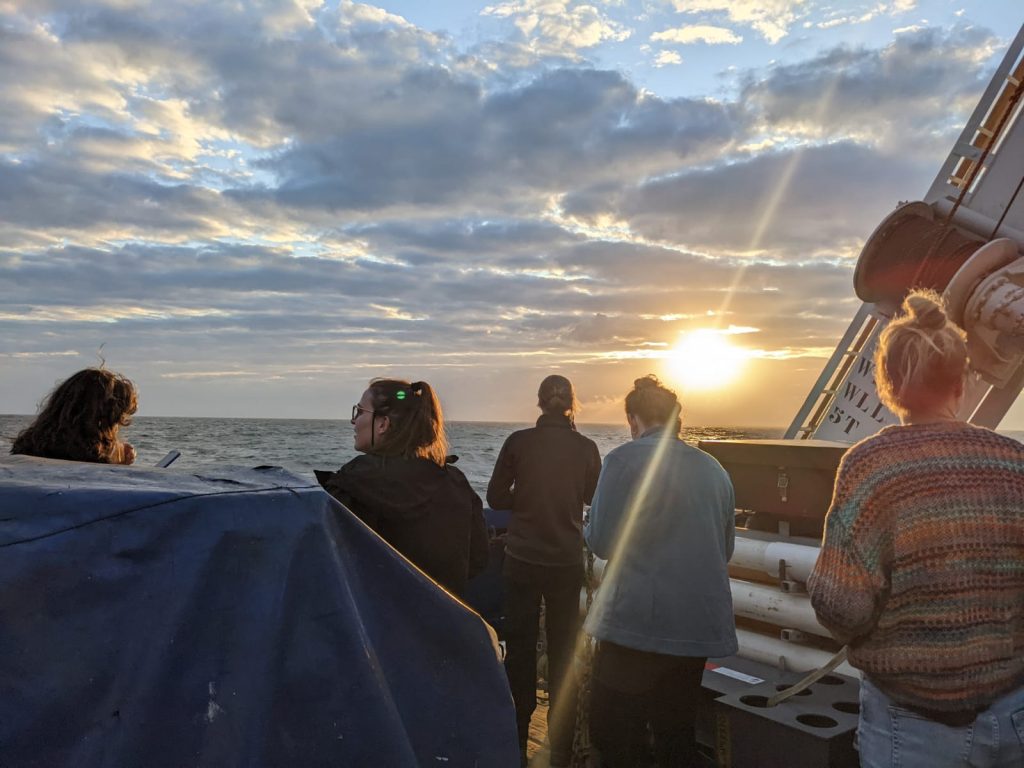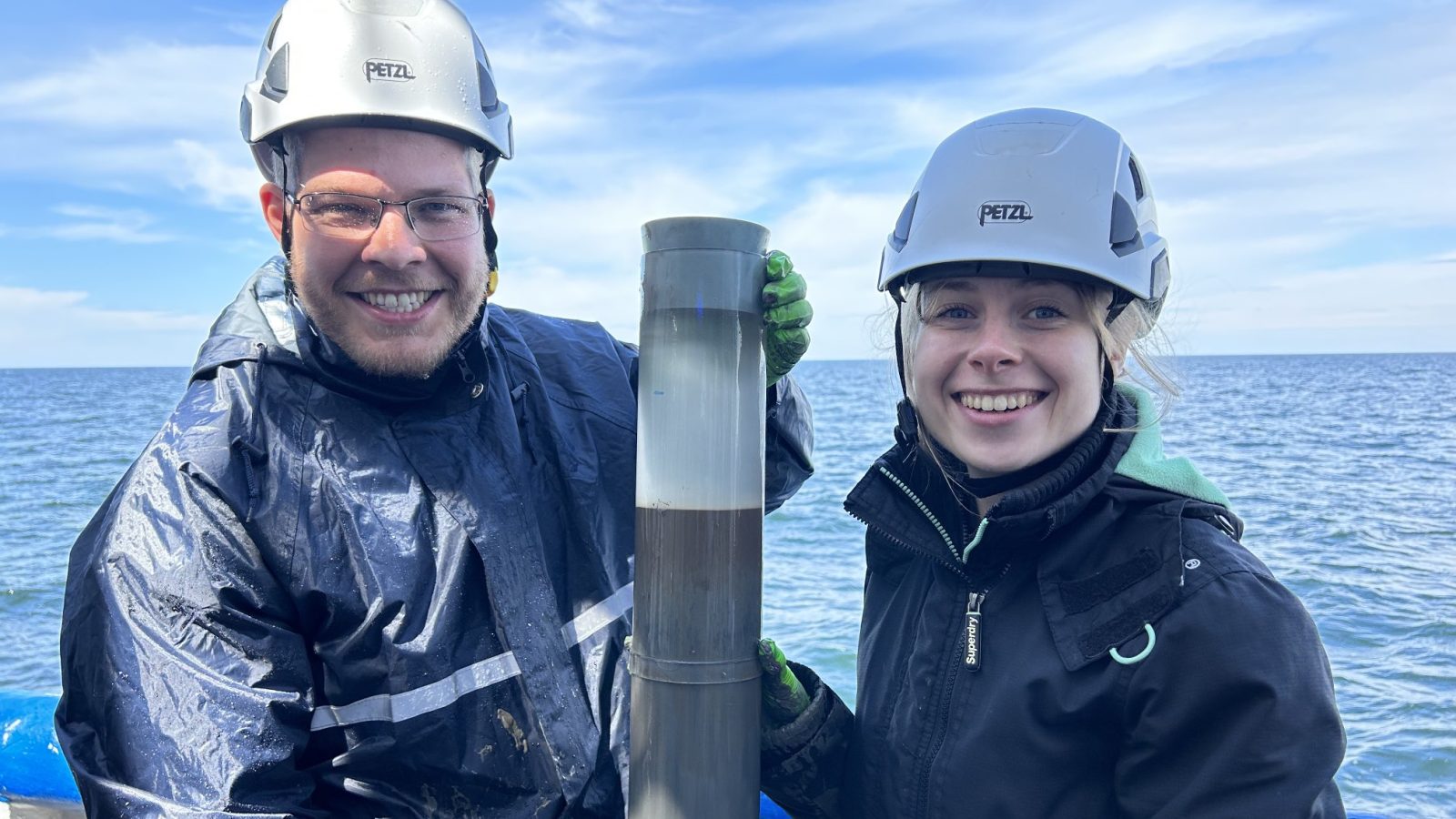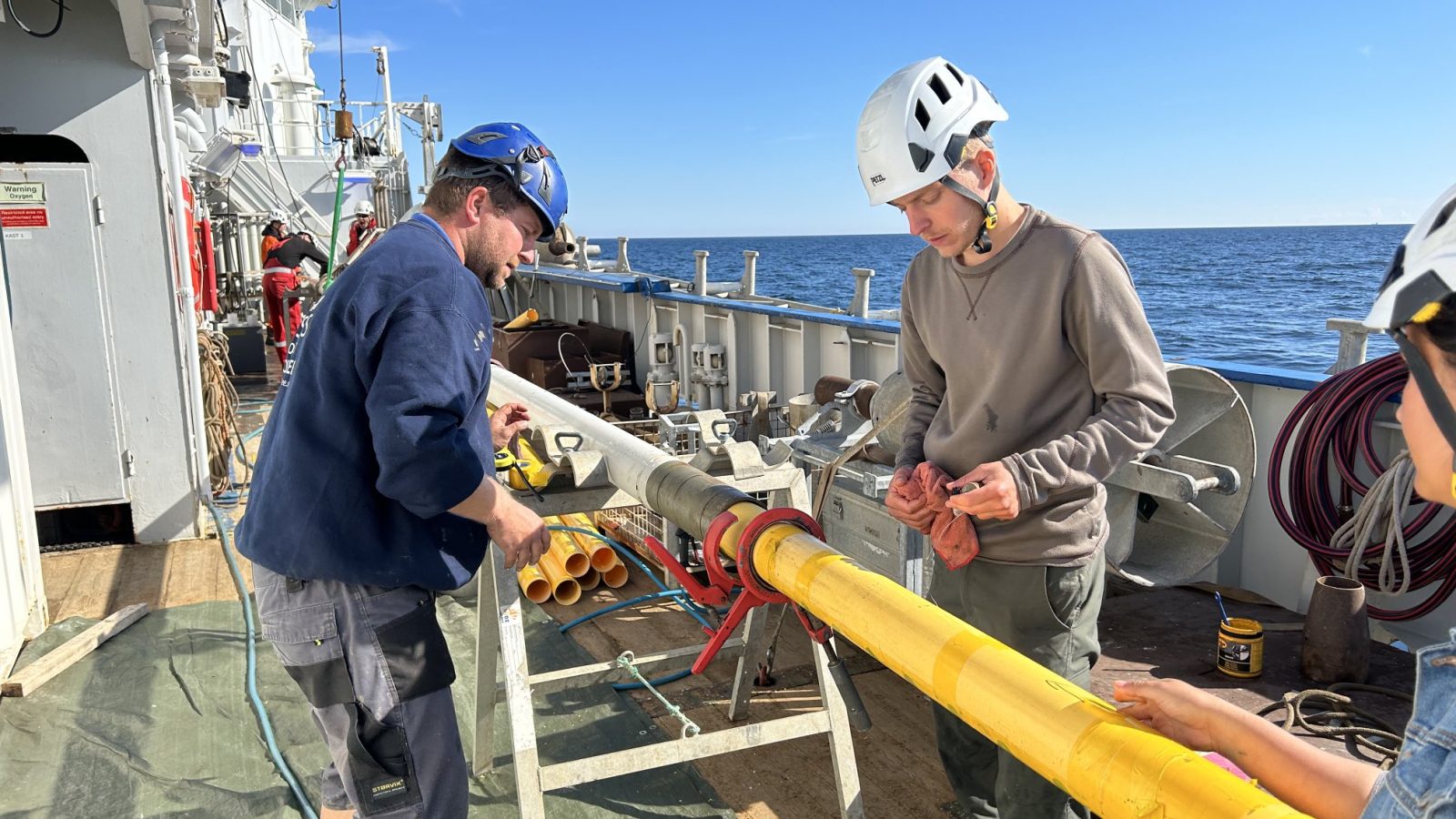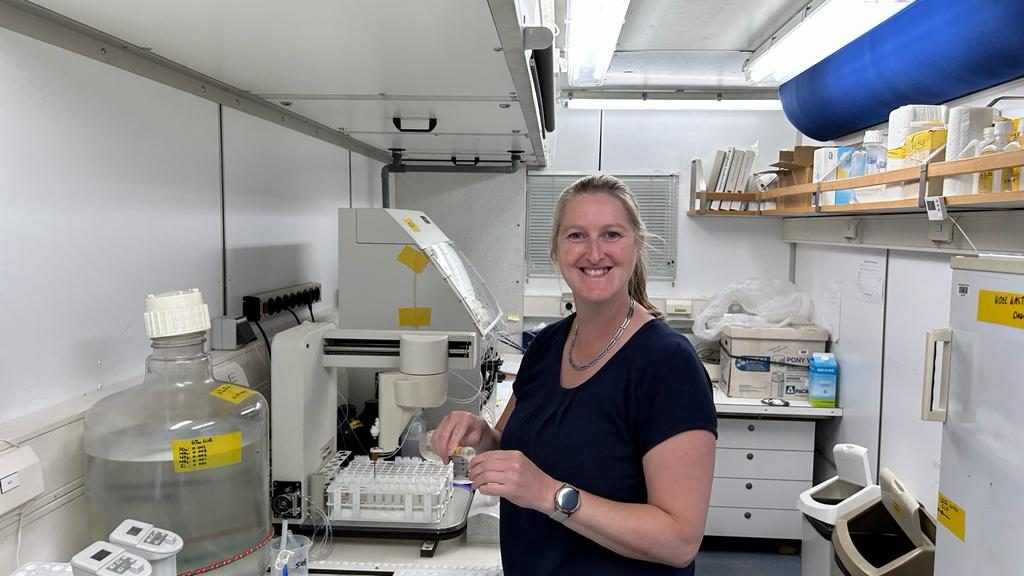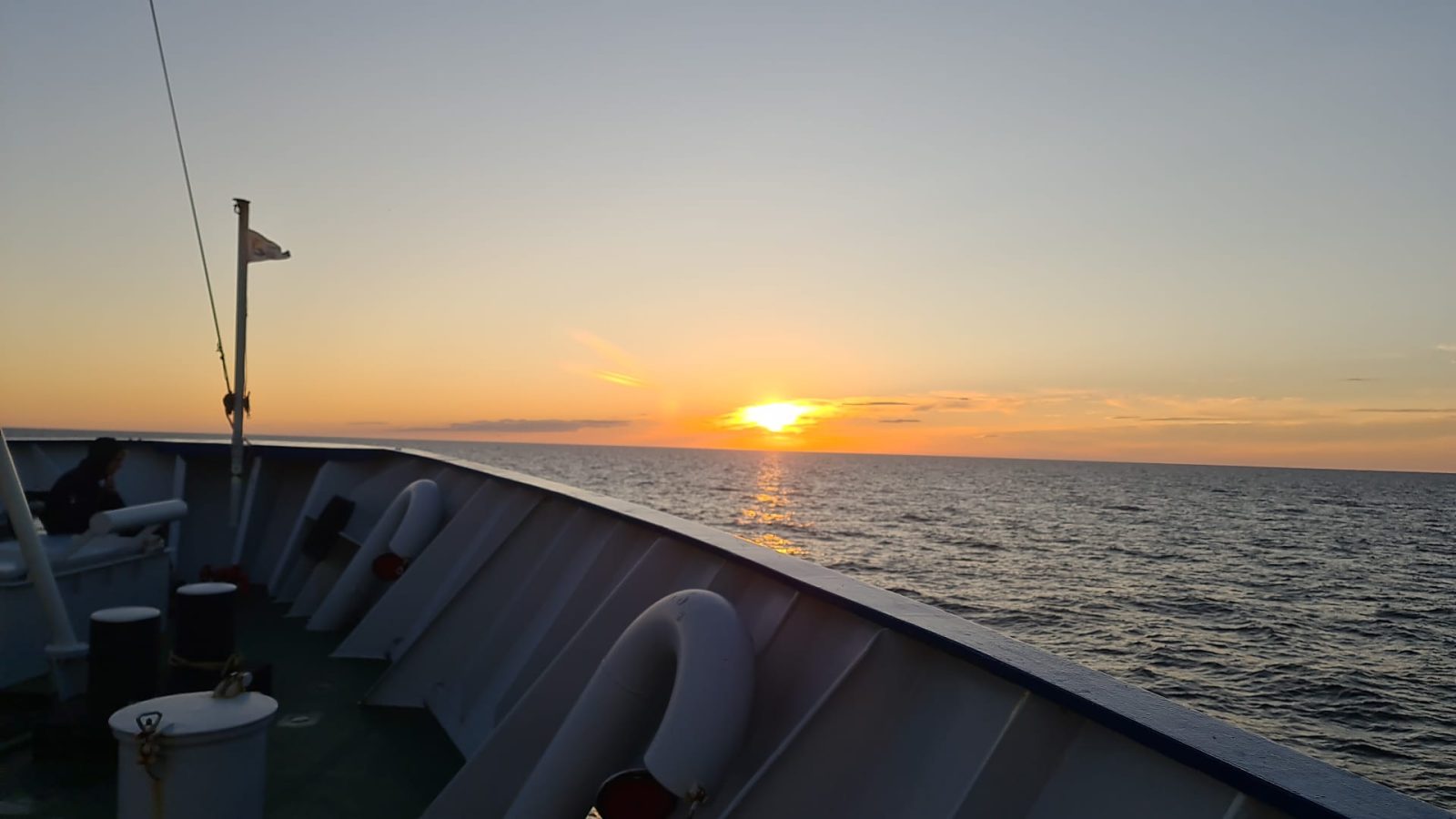Blog: Expedition to the Bothnian Sea
A quest for methane-eating microbes
This summer, a team of international researchers sets out for the Bothnian Sea on research vessel Pelagia, the Dutch flagship for marine research. The aim of the researchers is to study the dynamics of methane, a powerful greenhouse gas, which is coming out of the seafloor. The project is funded by the ERC Marix project and NESSC and is led by researchers at the Radboud University.
09 July 2023: First samples on deck!
Our transit to the Bothnian Sea – over the North Sea, through the Kieler Canal and the Baltic Proper – was a pleasure. There was plenty of time to discuss procedures and to practice the different sampling strategies. We also enjoyed some beautiful sunsets along the way!
Working at 4° Celsius
The weather was great when we arrived in the Bothnian Sea: very little wind and plenty of sunshine. Excellent conditions for a real sampling frenzy!
For our water sampling, we rely on a CTD-Rosette system. This is a device that, among other parameters, measures the temperature, salinity and oxygen concentration of the seawater with water depth. It contains 24 sample bottles (so-called Niskin bottles) that can be closed remotely. This allows us to bring up water from different depths.
Once returned on board, the water from the Niskin bottles is transferred into different smaller bottles and vials to determine the chemical composition of the water, including methane. The methane samples will be analyzed in the laboratories at Radboud University when we are back. The big question: is there methane leaking from the sediments into the water column?!
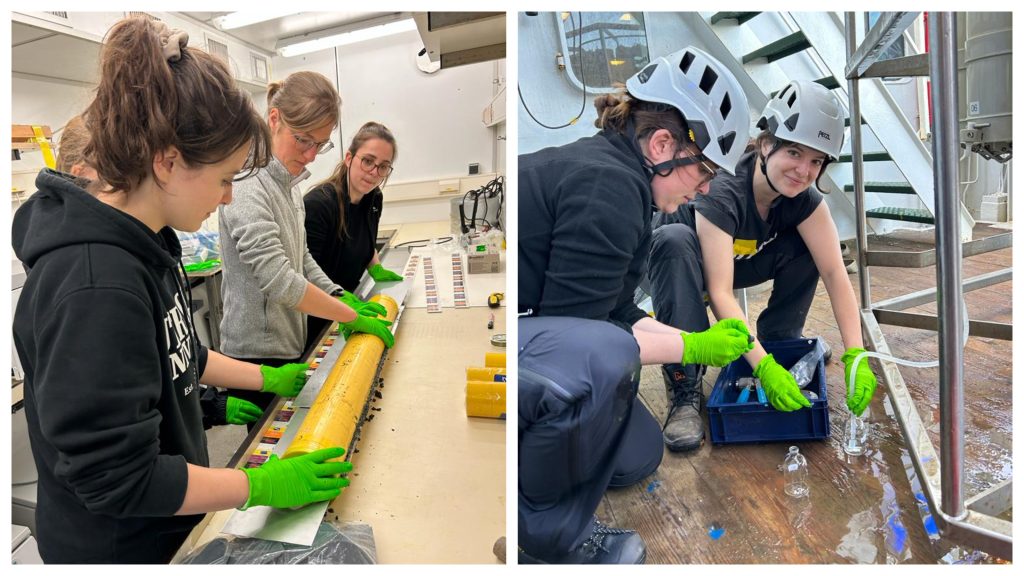
In our previous blog we described the multicorer. We will also use a gravity coring device which can capture up to ~10 meters of sediment. To process our samples, we work in laboratory containers at temperatures comparable to bottom water temperatures which are around 4° C in most of the Bothnian Sea! This means many of us are dressed for winter – even though it’s nice summer weather outside.
Chemical analyses
Most samples that we take will be stored for chemical and microbiological analysis later. But we are also doing some chemical analyses directly on board. For example, we’re measuring oxygen concentrations in the surface sediment using microsensors. We’re also making use of the great support facilities of Royal NIOZ: important nutrients, such as ammonium and phosphate and other solutes in the seawater, are measured directly in special lab containers on board. We expect the first results soon!
Already we have successfully completed sampling at two stations and expect to be able to complete all the planned sampling at the other stations in the coming days!
For more updates of our expedition, we will keep you updated via social media channels – if the internet connection and time allows! Follow us here:
Caroline Slomp
Olga Żygadłowska
RIBES Research
02 July 2023: Getting ready for departure
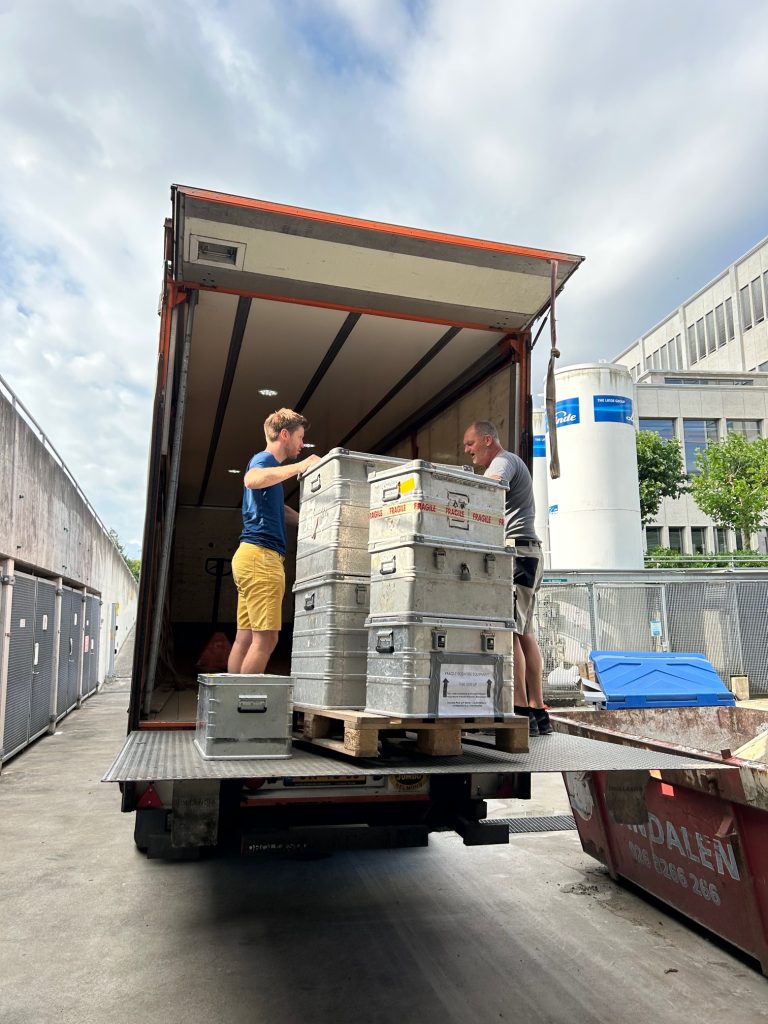
When scientists head out on a research expedition, it means that you need to move a laboratory onto a ship. That’s a lot of work: pack everything in crates, transport them to the harbour by truck, unpack them again on the ship. But our team of microbiologists and biogeochemists, also from Utrecht University and Helsinki University, is well-prepared. Plus we’re getting great support from the Netherlands Institute for Sea Research, NIOZ!
Today our science team just departed on our research ship, the Pelagia. The coming days we’ll head to our study area: the Bothnian Sea, an area of sea squeezed in between Finland and Sweden (see the map below).
Methane matters
We’re going to visit the Bothnian Sea to study methane which is released from the sea floor. It’s becoming more and more clear that coastal environments contribute to methane gas reaching the atmosphere – but far from everything is understood about the processes that are involved.
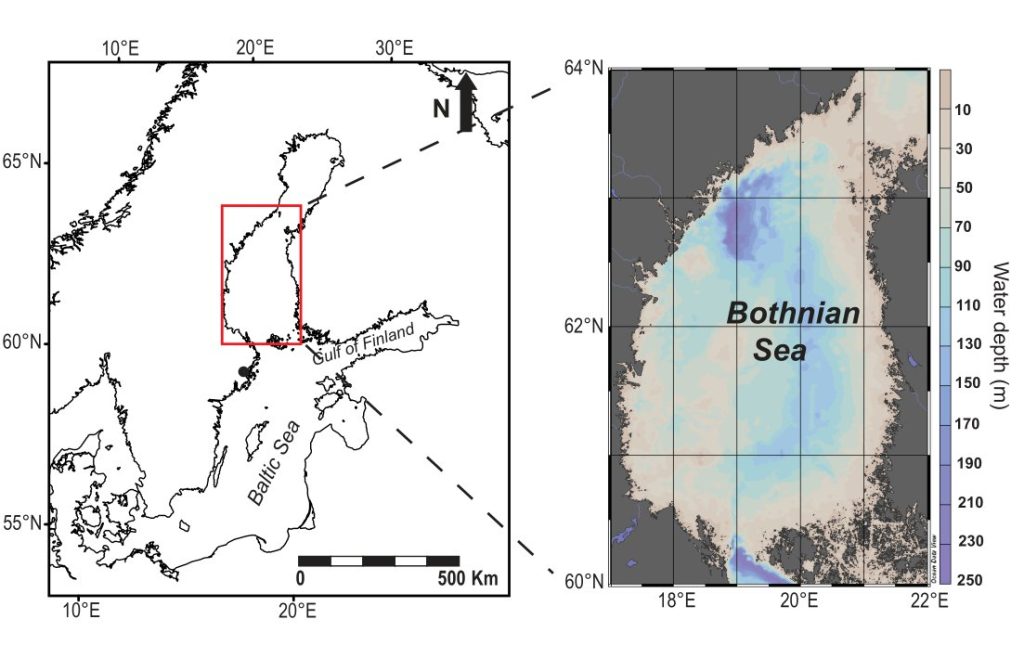
Methane is a very powerful greenhouse gas, it contributes significantly to climate change. The concentration of methane in the atmosphere has more than doubled since the beginning of industrialization.
We know now that microbes in the seafloor are responsible for both the production and the removal of methane gas. While rates of methane production in coastal areas are quite high, the removal of methane in the seafloor can be very efficient. This means that only a small fraction of the total methane produced in sediments escapes from the water and reaches the atmosphere.
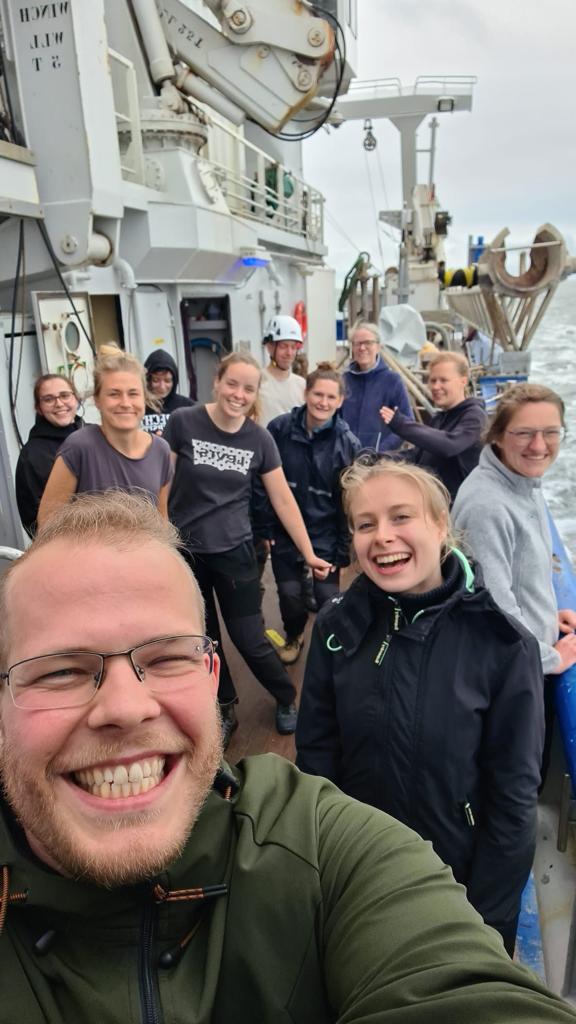
Various microbes
However, global warming and increased input of organic matter are dramatically changing coastal systems worldwide, causing increased methane production in coastal sediments. We do not know if microbes that currently remove the methane will be able to keep up with the increased methane production.
And that’s what the expedition to the Bothnian Sea hopes to find out! The goal is to characterize the various types of microbes in the seafloor that consume methane and understand what controls their growth and their efficiency to remove methane.
Samples, samples
We will collect samples from the seafloor at locations throughout the Bothnian Sea. For this, we will use a special ‘multicoring-device’ that allows vertical sections of undisturbed sediment to be collected.
When we get home, we will study the microbiology and chemistry of the collected samples in great detail. This will take months (sometimes years!) to complete, but we expect important discoveries!
We will come back with an update when the first samples are on deck!
